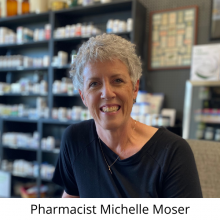What skin issues have been helped with Low Dose Naltrexone?
What skin issues have been helped with Low Dose Naltrexone? My skin issue went away when I went up to three milligrams of LDN, but eventually, it came back. What would you recommend? Maybe ask for a topical. Let's talk a little bit about dermatology issues. Usually, we see eruptions or changes in the skin because there's actually something going on in the gut that can happen with eczema, that could happen with psoriasis. Some other autoimmune issues have triggers that are also in the gut and we can try a topical. We can always try a topical. You can try that for 30 to 60 days. Maybe a half percent. Stay on your oral Low Dose Naltrexone of three milligrams every day and then try a topical Usually when LDN works and then it stops working that means there's probably something else going on in the gut. What I mean by that is if we're dealing with eczema, we're dealing with psoriasis, even some of the pemphigoid or the blistering type issues sometimes there is a pathogen, a bad guy kind of sort of so to speak, in the gut that will go away. Then spores will bloom and then come back.
In the 2021 online LDN Conference there's a wonderful physician out of Arizona who actually spoke on this issue because a lot of times when we have a gut problem that means we also have a leaky gut problem. Where if it's irritable bowel or small bowel, intestinal overgrowth or small bowel fungal overgrowth. It doesn't matter if it's bacterial or fungal or or any other pathogen, usually it leaves the stomach, travels through the bloodstream and usually ends up on the skin. The reason is the skin is the largest organ in the body. It's the last way to get out of the body and when we have skin issues most of the time we can link it back to some place in the gut.
Now remember the gut starts here: nose, mouth, ears, sinuses, then travels down the esophagus, goes to the stomach, goes to the small intestine, large intestine, out the back door. Any interruption in that, these spores, these bacterium, these pathogens can harbor. They can hide out. They can make a nice little family home and they can reproduce and they can pop up and rear up their ugly head at any time. Sometimes stress will trigger that. Sometimes changes in diet will trigger that. Sometimes lack of hydration. Sometimes even being out in the sun will trigger that. Topicals might be helpful in this situation but usually we need to do a deeper dive and see what's actually growing in the gut and there are several gut tests that are available. It's usually through a stool collection, usually a wide variety of providers have access to that.
If I may say, I like to use Microbiome Labs. That is the lab that I like to use and it seems to provide a very comprehensive analysis of what's going on and once we clear that up then we can see even lessening of the skin issues which is great. What we're looking for is to have beautiful clear skin.








